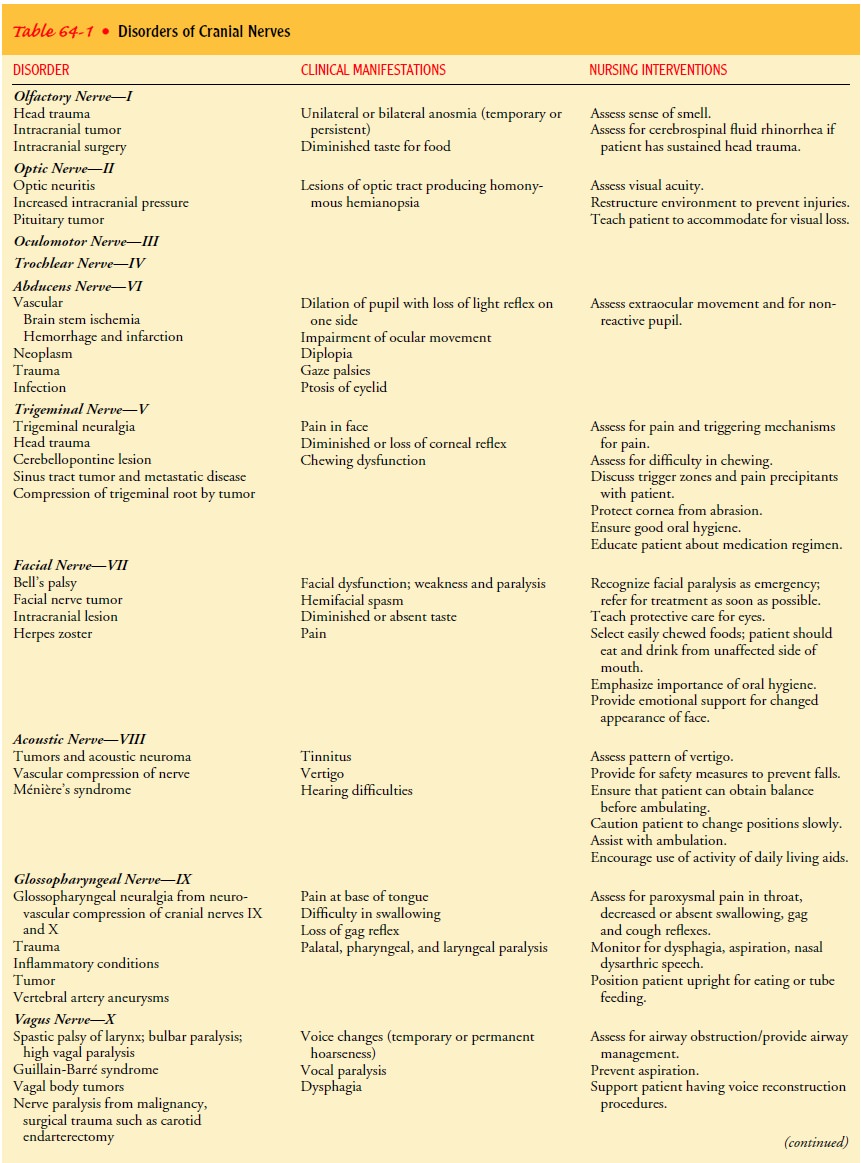Chapter: Medical Surgical Nursing: Management of Patients With Neurologic Infections, Autoimmune Disorders, and Neuropathies
Cranial Nerve Disorders

Cranial
Nerve Disorders
Because the brain stem
and cranial nerves involve vital motor, sensory, or autonomic functions of the
body, these nerves may be affected by conditions arising primarily within these
structures or in secondary extension from adjacent disease processes. The
cra-nial nerves (Fig. 64-6) are examined separately and in sequence. Some
cranial nerve deficits can be detected by ob-serving the patient’s face, eye
movements, speech, and swallow-ing. Electromyography (EMG) is used to
investigate motor and sensory dysfunction. MRI is used to obtain images of the
cranial nerves and brain stem. An overview of disorders that may affect each of
the cranial nerves, including clinical manifestations and nursing
interventions, is presented in Table 64-1. The following discussion centers on
trigeminal neuralgia, a condition affecting the fifth cranial nerve, and Bell’s
palsy, caused by involvement of the seventh cranial nerve. These are the most
common disorders of the cranial nerves.



Related Topics